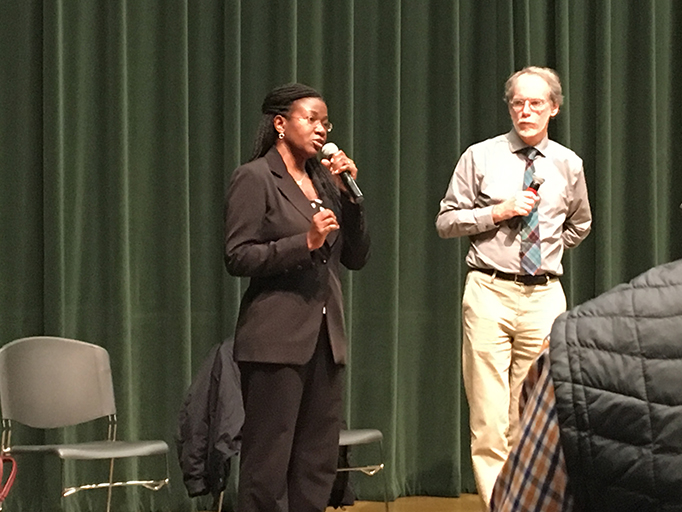Concerned faculty, students and reporters were in attendance at a question and answer session in response to the discovery of lead in some of Sacramento State’s drinking water sources. The event took place in the Redwood Room in the University Union from 12-1 p.m. Thursday.
Specialists Dr. Olivia Kasirye and Dr. Stephen McCurdy fielded questions regarding the safety of unfiltered water sources, while university faculty detailed measures to be taken immediately.
Some areas of concern included absorption of lead, effects on pregnant mothers and ingestion through food prepared at campus eateries.
Kasirye clarified that lead can only be ingested and that showering does not present a risk, as it cannot be absorbed through the skin.
McCurdy emphasized that there is “no safe level for lead” and that of the 449 tested water outlets, 58 were recorded of having lead levels above five parts per billion. 27 were above 15 parts per billion, which is the EPA action level.
It was said that 90 percent of all outlets have been tested. The university is “only pulling water from faucets that are safe,” according to Justin Reginato, the interim associate vice president of Facilities Management.
The campus is working to put together a list of all buildings that have been tested. Since the news broke on Wednesday, bottled water has been handed out at select locations and will continue until the situation is resolved.
Multiple mothers in attendance asked whether they should be concerned about breastfeeding their children, to which Kasirye replied lead is usually found in the blood. She said it “can be carried across placenta.”
Kasirye went on to say that the blood drive on Friday sponsored by Blood Source is not a concern. She said lead will only stay in the blood for about a month, and that Blood Source screens its donors before and after each collection.
Both speakers encouraged the audience to speak with their healthcare providers for peace of mind.
Steve Leland, the director of environmental health and safety, said that all food preparation outlets including the dining commons and on campus eateries are being tested.
He said that Starbucks maintained the same standard of filtered water across each location of the chain but will be tested to confirm.
The physicians advised the public to use cold tap water and let it run for approximately 30 seconds before use. They said heat increases the amount of lead seeping into water and clarified that boiling water will have the same effect.
Sac State is in the process of hiring a forensic engineer to check each water source, in order to provide a clear indicator of which outlets have been filtered and to develop a procedure to prevent future cases.
Leland and Steve Perez, the vice provost of academic affairs, said that because Sac State is not a K-12 school, “it’s been a number of years” since the last testing of campus water. However, Leland said “every drinking water source will be tested.”
For further developments, follow the State Hornet and check the Frequently Asked Questions page available on the school’s website.





























































































































